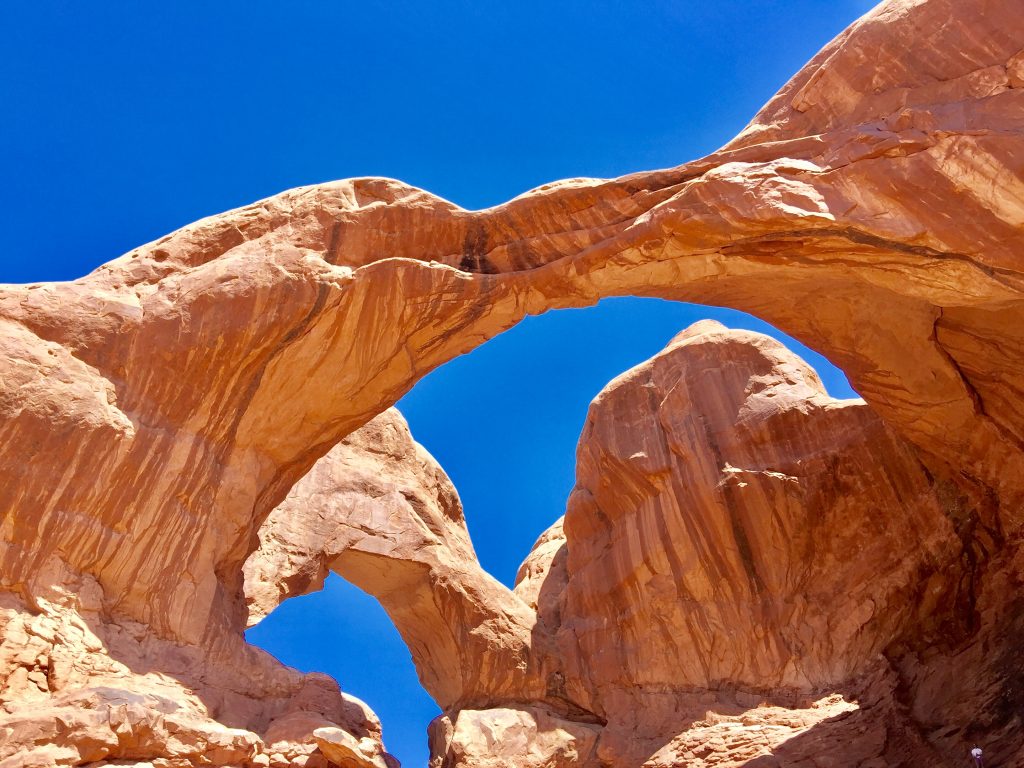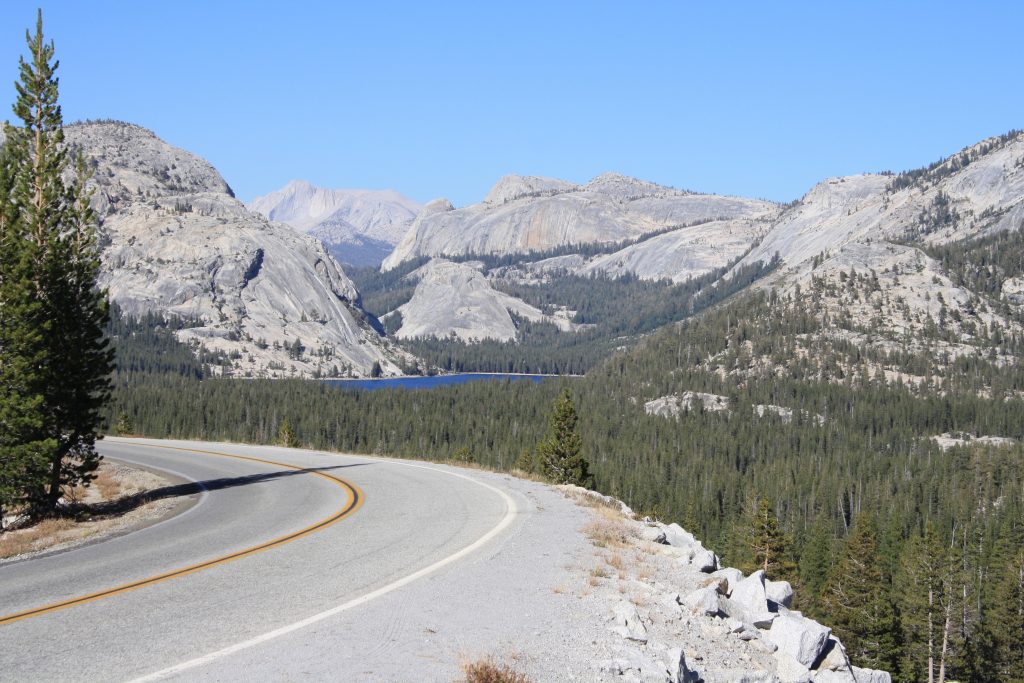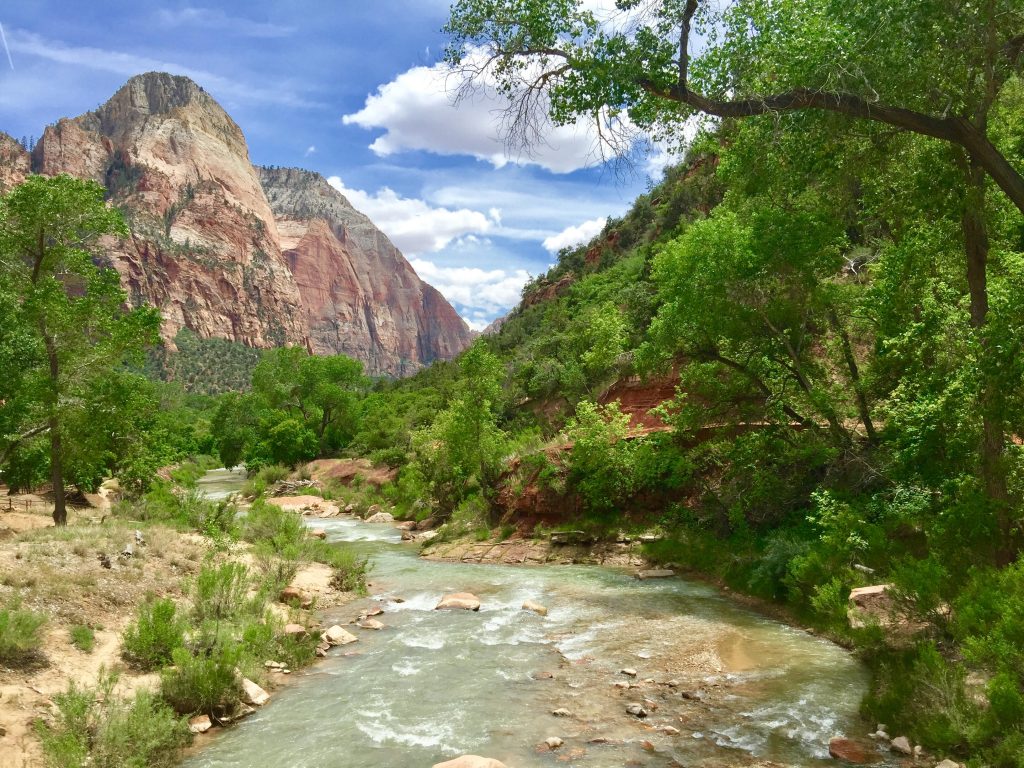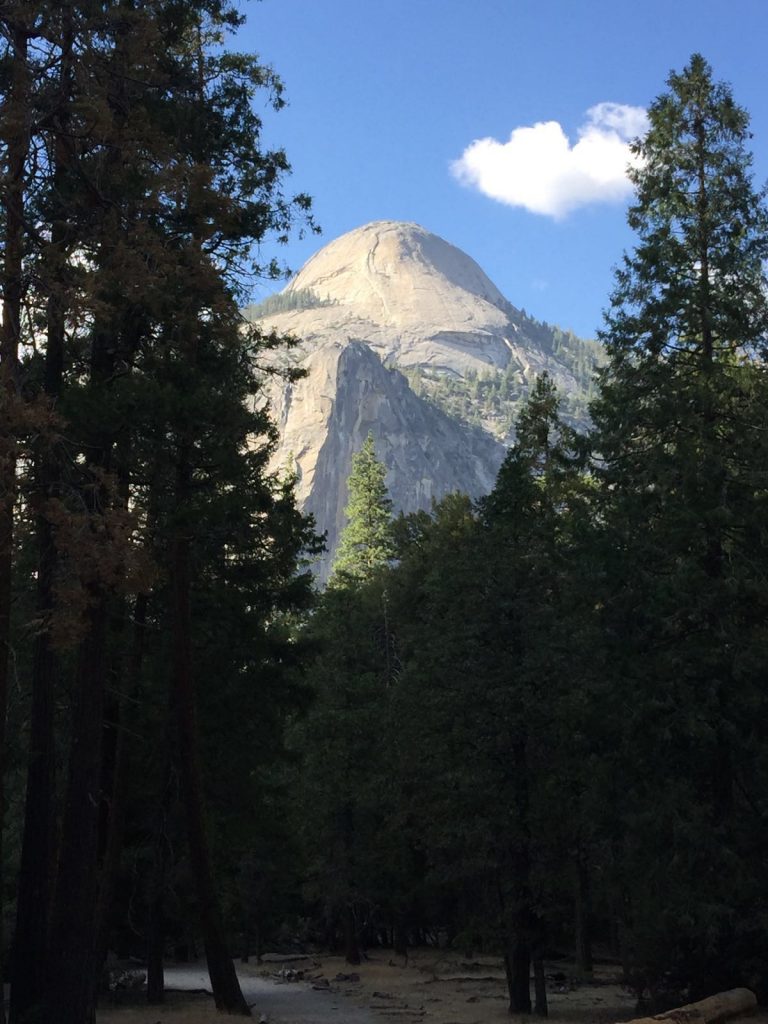Recent events have brought forth myriad concerns for Americans, among them, the potential silencing of scientific research and rumors of changes to the Antiquities Act of 1906, that allows presidents to secure natural areas as monuments. After reading countless articles, opinions, rantings and outcries of desperation regarding the subject, I came to a singular, perhaps optimistically naïve conclusion: that the unrelenting attraction of nature will inevitably save the pursuit of and support for scientific research.
As a science writer and researcher, any potential peril to the access of scientific research and data is cause for concern. In this case, my concerns as a professional were tempered by my experiences as a person. I recently became reacquainted with the National Park Service. In other words, I became a card-carrying (annual national park pass-holding), NPS passport-stamping, full-on junkie. I visited, alongside my even more crazed NPS enthusiast husband, 14 of the 59 national parks in less than six months and have no plans of stopping.
There’s something about national parks that draws even the most indoorsy people outdoors.
Perhaps it’s the romanticism that accompanies the unexpected or the nostalgic pull of the great American vacation through grand canyons and towering granite monoliths that seem to appear out of nowhere and then suddenly are everywhere.
Whatever it may be, national parks draw millions of people to explore and wander through lands unblemished. They provide a passageway through time, transporting us millions of years in the past and forcing us to confront the sheer magnitude of what nature can create millions of years into our future.
For some, national parks provide a spiritual foray into an introspective contemplation of meaning and existence. For others, it’s a chance to see the biggest, oldest, tallest or otherwise superlative iconography.
For me, it was a little bit of both. As a doctoral student consumed by research, spending time in dusty archives or in between the pages of old books, there became a dire need, for sanity’s sake, to come up for air. Eyeballs deep in the study of people, events, places, timelines, letters, memos and other such minutiae, I found myself in deep need of disconnecting from my role as a controller of narrative.
It just so happened that when I looked up, I was sitting in an apartment in a city just hours from some of the nation’s most exquisite natural wonders.
My husband and I had visited the Grand Canyon a couple of times. Its unparalleled exposition of geological strata and caves filled with prehistoric fossils safeguarded by the dry climate provided more history in one glance than either of us had ever consumed in our short lifetimes.
If you’ve never been there, go.
Visiting the Grand Canyon is an awe-inspiring experience. While you want to express the magnitude of what lays before you, you are forced into a calm silence. “Speechless” isn’t the right word. It’s not that you can’t find the words to describe it, it’s that there are no words to describe it. And so you stand, you watch, you wonder. For someone who lives off the value of a word, this experience is nothing short of an incapacitating humbleness.

The Grand Canyon >Photo courtesy of Omar Shafi Khan
For one precious moment, I had no ability to capture a moment. There was no way to describe what I was seeing, no way to capture it, but also, no way to forget it. It was not a sight to behold, but a state of being. In that place, time was not measured in its passage, but in its undeniable force.
I had rekindled a love and appreciation for scientific wonder, nature, preservation and protection without having heard a single statistic.
I sought to recover that feeling that freed me at the Grand Canyon once again.
I searched the internet for our next adventure. Arches National Park, on the east end of Utah, was just seven hours away by car. It seemed an unearthly, wondrous place. Arches is home to over 2,000 natural stone arches. Estimated at 65 million years old, the region is a result of various types and degrees of erosion, carving and shaping the red rocks into delicate and elaborate archways, stone fins and balanced rocks. On a clear night, under the cover of its complete, engulfing darkness, peering through the gateways of those arches, you can see the galaxy above.
On the west end of Utah sits a national parks heavyweight, Zion National Park, the 250 million-year-old geological equivalent of an ice cream sundae on a hot summer afternoon. It is green, has glistening emerald waterways and pulled at the heartstrings of my husband, a transplanted desert-dweller in need of a good view of grass.
I wanted to see the towering arches within an enormous desert and he wanted to sit on the banks of a babbling brook encased by sandstone cliffs and lined with blooming flora.
Luckily for us, we learned that between the two parks sat three others: Bryce Canyon, Capitol Reef and Canyonlands national parks. Instead of picking one, we decided to go to all five.
It was an adventure of epic proportions. The ensuing road trip is one we will likely never forget, and even more likely, never fully appreciate.
We hiked through structures that seemed extraterrestrial. We walked beneath waterfalls, carefully hugging the walls of a grotto. We sat among hoodoos of unparalleled beauty that had been patiently shaped by the pressures of the wind. We drove through a massive gorge cut sharply by the force of water. We sat on the edges of massive canyons.
By the time we reached our last stop at Arches, we had seen things we never imagined. As I sat beneath the Double Arch on that cool, clear day in May, I felt at home. Double Arch is a famous spot in the park. It is a close-set of two enormous arches, (porthole arches formed by water from above rather than erosion from the side) that sit in the middle of the desert. When perched between the colossal structures, you have a beautiful view of the surrounding area. The openness of the desert is overwhelming but the snowcapped mountains in the distance are a reminder that something entirely different is just beyond the horizon.
I was silenced.

Double Arches >Photo courtesy of Omar Shafi Khan
We spent the rest of the year visiting every national park and national park site we could during our time off, over long weekends and even regular weekends. We drove to California and in one swoop visited Sequoia, Kings Canyon, Yosemite and Death Valley national parks.
Yosemite proved to be the most challenging. It was full of people, much to my dismay. Just before we left, we made one last stop. We parked our car on the side of the road, right next to the celebrated Yosemite Valley. It was an open field with scattered trees of such enormity that the famed 100 million-year-old, 3,000-foot-tall granite monolith, El Capitan, looming over them seemed commonplace. We walked down a tiny path toward a wooded area. Once through the thin woods, we came upon a glistening river, guarded by enormous rock structures and hidden from the valley by the mammoth trees we had walked through.
There was no one there but us. The bustle of Yosemite on a holiday weekend had melted away.

Yosemite National Park >Photo courtesy of Omar Shafi Khan
The river babbled, and again, I was silenced.
I deliberately use the word “silenced” and not “silent.” My silence was no choice. I was forced to stop attempting to describe, demarcate, explain, validate or in whatever other way we subconsciously try to control, the world. This was not information to be processed. It was catharsis from the overwhelming desire to explain.
My experience juxtaposed an equally valid yet opposite one.
My husband is a science-minded man who spent early mornings in college surveying areas by streams, turning over rocks in search of frogs, an indicator species that can provide a blueprint for large-scale changes in the environment. He later spent late nights as a graduate student poring over data sheets and manipulating software to learn about analytics used to evaluate large-scale health data. Where I would stand silenced, he, ordinarily more contemplative than talkative, would come alive in an extraordinary way.
He wouldn’t shut up.
We had discovered a space from which we both received just what we needed, calm and unending excitement.
Our drives became equal parts extensional silence and lively discussions about geology, history, physics, geography, cartography and conservation.
Something about the wonders found in national parks subdued my often overly analytical mind. National parks energized his logical contemplation.
To him, national parks were not simply an unexplainable work of art. They were a quantifiable and dramatically beautiful work of science.
The parks are teeming with scientific opportunity. Aside from the millions who visit each year, national parks are frequented by scientists who, beyond studying the actual parks, use the protected spaces to conduct experiments designed to understand and prepare for future environmental events, or in some cases, use natural occurrences to develop products and medicines.
Much has been written on the value of the national park as a laboratory. Scientists use beautifully preserved national lands to better understand the land we have already devastated and to discover and analyze wildlife that live in these unparalleled sanctuaries protected (for now) from human encroachment (to some degree).
Scientists use the nation’s most well-known national parks to learn about the unknown. What draws millions who “need to see” draws scientists who “need to know.”
Scientists are hard at work at 289 of the over 400 national park sites across the nation. Their work comprises some 4,000 experiments and in the past two decades, around 28,000 studies have been conducted on the protected lands. Some of the research was done for park management purposes, others to study climate change, conservation and restoration.
The discovery of a microorganism at Yellowstone that could survive in extreme temperatures that would otherwise kill most living organisms enhanced the development of the polymerase chain reaction (PCR) process for rapidly replicating DNA, consequently pushing DNA sequencing forward into a multibillion-dollar business. According to the National Park Service, more than 40 patents are a result of research from Yellowstone alone.
There is undoubtedly a concern that should the scientific study in the national parks stop or the research or researchers be silenced, that we will lose enormous scientific resources. This is true. National parks are unparalleled laboratories that once lost can never be replicated.
As I visited more parks, I became increasingly dedicated to the preservation of the land, not merely at these sites, but also at all those in between. I have also come to the optimistic conclusion that should the scientific work be silenced, national parks will not be a casualty, they will be what motivates countless Americans, scientists or otherwise, to preserve the spirit of environmental protection through historical documentation, scientific research, art or activism.
There is nothing so American as our national parks
After all, it has been the land that has changed the hearts of men. The land silenced the industrialist’s desire for the depletion and destruction of natural resources. Those who discovered these natural resources were compelled by their beauty to protect them not out of an inherent spirit of preservation or as part of a society that valued conservation. In fact, when the national park movement began, the natural landscape was being ravaged for natural resources.
We have not protected the parks so much as they have protected us for us. They have moved the “movers and shakers” of the world. They have drawn the world’s greatest scientists to remote areas. The richness of these areas will not be silenced. They will instead, as they have for over 100 years as part of the National Park Service, teach us to be silent.
So long as national parks remain a piece of Americana, generations will witness the incredible power of the environment to literally and intellectually shape our world.
When witnessing the wonders in national parks, for a moment, you can see the past, present and future all at once. Time, so often corrupted by our linear conception of it and degraded by our attempts at controlling it, are meaningless in the vastness of nature. For that moment, we are likely to see change and ask “how” before “when” or “why.” That shift is one of vital importance. In these spaces of splendor, we are all artists and scientists. We all wonder about what was, is and what might be — the cusp of all great adventures.
In whatever way we react to what we see or experience, be it silence or voracious inquisitiveness, the forces that alter the space have the potential to alter our future. While policy and practical application will always be fundamental, even more important will be how and if we build relationships with the lands that we intend to protect. Perhaps, as it was before, those who venture to these peculiar and unspoiled places will be called to protect them.
“There is nothing so American as our national parks,” Franklin Roosevelt said in 1936. “…The fundamental idea behind the parks … is that the country belongs to the people, that it is in process of making for the enrichment of the lives of all of us.”
So, venture on. In a time when protests and marches fill the street, take a moment to wander through the nation’s protected lands. The silence found there may speak the loudest.
*Image: Joshua Tree. Photo courtesy of Omar Shafi Khan.








